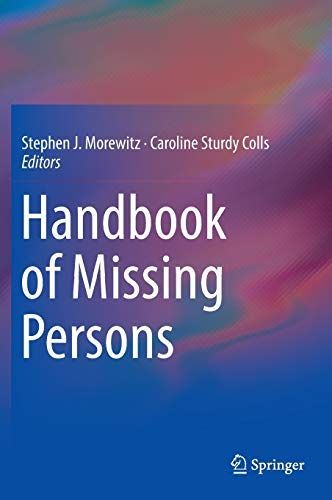
Handbook of Missing Persons
This ambitious multidisciplinary volume surveys the science, forensics, politics, and ethics involved in responding to missing persons cases. International experts across the physical and social sciences offer data, case examples, and insights on best practices, new methods, and emerging specialties that may be employed in investigations. Topics such as secondary victimization, privacy issues, DNA identification, and the challenges of finding victims of war and genocide highlight the uncertainties and complexities surrounding these cases as well as possibilities for location and recovery. This diverse presentation will assist professionals in accessing new ideas, collaborating with colleagues, and handling missing persons cases with greater efficiency—and potentially greater certainty. Among the Handbook’s topics: ·A profile of missing persons: some key findings for police officers. ·Missing persons investigations and identification: issues of scale, infrastructure, and political will. ·Pregnancy and parenting among runaway and homeless young women. ·Estimating the appearance of the missing: forensic age progression in the search for missing persons. ·The use of trace evidence in missing persons investigations. ·The Investigation of historic missing persons cases: genocide and “conflict time” human rights abuses. The depth and scope of its expertise make the Handbook of Missing Persons useful for criminal justice and forensic professionals, health care and mental health professionals, social scientists, legal professionals, policy leaders, community leaders, and military personnel, as well as for the general public.
Reviews
Jane Krauss@ladyjane95